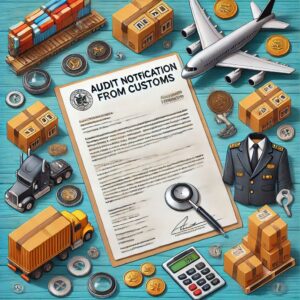Each year more than 1.25 million shipments of dangerous goods are transported by air. With a projected air freight growth of 4.9% per year for the next 5 years, the number of dangerous goods shipments will increase significantly. safety regulations must be strictly observed.
IATA helps identify risks and works with ICAO (International Civil Aviation Organization) to change regulations by providing stakeholders with the most up-to-date guidance on the safe handling and shipping of dangerous goods.
What are Dangerous Goods
It’s important to know what a dangerous good is before you ship. According to IATA’s Dangerous Goods Regulations (DGR) Manual, “Dangerous goods (also known as hazardous materials or hazmat) are articles or substances which are capable of posing a hazard to health, safety, property or the environment and which are shown in the list of dangerous goods in the IATA Dangerous Goods Regulations or which are classified according to those Regulations.” Because IATA participates in strict regulatory process, dangerous goods can be transported by air safely and securely when these guidelines are closely followed.
What Are Examples of Dangerous Goods
Most transport of dangerous goods is handled by shippers who are knowledgeable in the area of shipping hazmat. For many travelers, however, it is unknown what types of things are considered dangerous goods. Some examples of dangerous goods are aerosols, lithium batteries, infectious substances, fireworks, dry-ice, gasoline powered engines and machinery, lighters, and paint. (table from 4.2)
Why Dangerous Goods training is necessary
Because safety is IATA’s number one concern, dangerous goods training is required for all persons across the entire supply chain who prepare, offer, accept and handle dangerous goods. This dangerous goods training must be renewed every two years. IATA makes obtaining this training easy and accessible to everyone who needs it by offering courses and yearly manuals so that stakeholders can be up-to-date on the most current rules and regulations. IATA’s desire to keep aviation safe is the driving force behind ensuring the regulations are met by adequately training all parties involved in the transport of dangerous goods . Whether you are shipper, freight forwarder, a cargo acceptance agent, cabin crew member or anything in between you can find up-to-date information on training for dangerous goods in our training section.
What Are IATA Dangerous Goods Regulations
IATA’s Dangerous Goods Regulations are rules outlined in an easy-to-read manual that is based on the International Civil Aviation Organizations (ICAO)’s instructions for the safe transport for dangerous goods. IATA’s Dangerous Goods Regulations also include the United Nations classification of each article or substance and their acceptability and conditions for air transport. IATA takes the safety guidelines of these two entities, ICAO and the UN, a step further, ensuring the highest safety protocols are followed.
How Often Are The IATA Regulations Updated
While ICAO updates its regulations every two years, IATA recognizes that significant changes take place year to year, and the need for updated information is necessary to stay in touch with safety protocols. The need to stay current with the individual country and airline restrictions, which can be more restrictive than ICAO regulations, require more up-to-date information. This is why IATA updates its manual every year, including the latest IATA regulations and changes to procedures.
What Are The Dangerous Goods Classes
The United Nations assigns dangerous goods to one of nine classes, and every dangerous goods will fall into at least one of the classes. It is essential to classify dangerous goods correctly so that the hazard(s) posed are communicated through the transport chain. The dangerous goods classes are as follows:
- Class 1—Explosives
- Class 2—Gases
- Class 3—Flammable Liquids
- Class 4—Flammable Solids; Substances Liable to Spontaneous Combustion; Substances which, in Contact with Water Emit Flammable Gases
- Class 5—Oxidizing Substances and Organic Peroxides
- Class 6—Toxic and Infectious Substances
- Class 7—Radioactive Material
- Class 8—Corrosives
- Class 9—Miscellaneous Dangerous Substances and Articles, Including Environmentally Hazardous Substances
How Are Dangerous Goods Identified?
Depending on a hazardous material’s classification and composition, it will be assigned a UN number and a proper shipping name.
IATA’s Dangerous Goods Regulation Manual (DGR) contains a list of approximately 3,000 articles and substances that are commonly shipped by air. This list includes names for listed entries such as paint and ethanol as well as generic “not otherwise specified” (n.o.s.) entries that cover a chemical family or group of related substances, such as alcohols, n.o.s. and environmentally hazardous substance, liquid, n.o.s.. (4.0.2.1)
How Are Dangerous Goods Transported By Air
For hazmat to be shipped by air, there are specific procedures to be met. First, the shipper must meet their criteria, such as declaring the shipment as dangerous goods, properly completing the Dangerous Goods Declaration, and adequately preparing the shipment for transport. Then the cargo acceptance procedures are carefully enacted. Using the Dangerous Goods Checklist will make sure that what the shipper has submitted complies with the Dangerous Goods Regulations.
Next, the operator must go over the Dangerous Goods Checklist and ensure all regulations are met within those guidelines (see IATA’s Dangerous Goods Regulations (DGR) for more information.
While dangerous goods storage and handling occur throughout the proceeding, the loading process comes next. It is important not to store or load certain dangerous goods next to one another and never next to food items. All packaging must be secured, as well as other items being shipped so that they do not shift during transport and fall into the dangerous goods causing damage to their packaging. (9.3.5)
Top 3 Dangerous Goods Transported Each Year
Out of the over 1.25 million packages of hazmat shipped each year, three types of dangerous goods stand out. These are items that are most commonly shipped, being flammable liquids, dry-ice, and lithium batteries. Dry ice is widely used as a refrigerant for goods such as frozen foods and pharmaceuticals, including vaccines.
Who Is Involved In The Transport Of Dangerous Goods And What Are Their Responsibilities
Proper training for all persons in the dangerous goods supply chain is vital to ensure that the hazards posed by dangerous goods are understood and everyone involved is competent to perform the functions for which they are responsible. While some functions require basic knowledge of the dangerous goods regulations, other functions need detailed information regarding the hazardous material regulations to carry out their duties. In any case, regulations and adequate training are required for each job function. This is true for shippers and packers, freight forwarders, operators and ground handling agents as well as security screeners. Having everyone who may come in contact with dangerous goods adequately trained is imperative. This includes cabin crew members and passenger check-in agents, because some items that passengers carry are classified as dangerous goods, such as mobile phones, tablets and laptops, which have a lithium ion battery. (Sec 1)
Infectious Substances
As the shipping of infectious substances, including specimens being shipped for diagnostics purposes is typically limited to people involved in the healthcare industry, including the veterinary sector, IATA has created the Infectious Substances Shipping Guidelines (ISSG). It is a comprehensive shipper focused guide that helps shippers, safely meet the regulations necessary to ship infectious substances and patient specimens.
Lithium Batteries
Lithium batteries are one of the most commonly transported dangerous goods. The rules and regulations regarding the transport of lithium batteries need to be addressed specifically, so IATA created a unique manual geared specifically to shippers of lithium batteries. The manual further breaks down how to safely transport lithium batteries for companies and individuals who may not be familiar with the dangerous goods process. The IATA Lithium Battery Shipping Regulations (LBSR) can better assist with the regulations for shipping lithium batteries and items that contain lithium batteries.
Shipping & Handling – Safely transporting hazardous material by air begins with proper shipping and handling. Shippers must follow the dangerous goods regulations strictly as this starts the safety protocol for the transport of dangerous goods by air.
Shippers And Operators Responsibilities
Proper safety for the transport of hazardous material begins with shippers and ends with the operators. The shippers have specific responsibilities that must be closely adhered to for their goods to be accepted by the airlines. They are responsible for every aspect of the packaging of their dangerous goods as well as explicitly following these guidelines: (Sec 5)
- Comply with specific packaging requirements
- Use only the packaging permitted per IATA’s Dangerous Good Regulations (DGR)
- Correctly assemble and secure packaging according to instructions
- Adhere to the proper quantity per package
- Ensure packaging exterior does not contain any contaminants
- Remove any previous marking of container that no longer apply
- Properly label each package
- Fill out Shipper’s Declaration for Dangerous Goods correctly along with Air Waybill
The operators will ensure that the shippers meet all guidelines and process each package against the Dangerous Goods Checklist to prepare it for storage or loading.
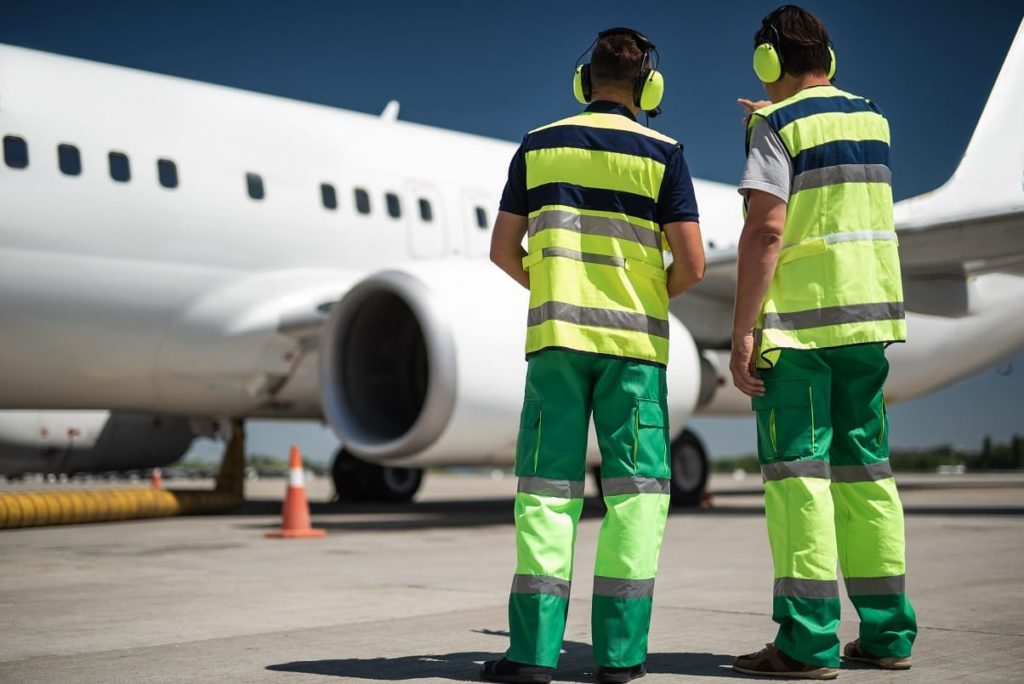
To ship dangerous goods by air, the hazmat must be appropriately prepared and meet the dangerous goods regulations exactly. It begins with properly identifying the dangerous good and then the quality of packaging, which means being strong enough to withstand the loading and transport from pallets and Unit Load Devices (ULDs). They must also ensure there is no damage or leakage and that the changes in pressure and temperature will not damage the goods within it.
Each package must be marked and labeled appropriately with special care instructions as well as its classification.
Shippers must be sure that only certain hazmat are placed in freight containers or ULD; see IATA’s Dangerous Goods Regulations (DGR) for further information.
How Do I Complete A Dangerous Goods Declaration
Each hazardous material shipment must be accompanied by a Shipper’s Declaration for Dangerous Goods and Air Waybill document. When filling out the Dangerous Goods Declaration, the format, language, color, and size of the document are all very specific and must be adhered to. The following information is required on the document:
- Shipper name
- Consignee
- Air Waybill Number
- Page of pages numbers
- Aircraft Limitations
- Airport Departure
- Airport Designation
- Shipment Type
- Nature and Quantity of Dangerous Goods
- Number and Type of Packaging
- Packing Instructions
- Authorizations
- Additional Handling Information
- Certification Statement
- Name of Signatory
- Date
- Signature.
How to fill out a shipper’s declaration for dangerous goods and air waybill
Along with the Shipper’s Declaration of Dangerous Goods the freight forwarder will fill out the Air Waybill. The required information for that is as follows:
Handling Information Statement, Mixed Shipment if applicable, if the shipper’s declaration is not required, then the UN or ID number, proper shipping name, number of packages, and the net quantity of packages must all be noted. The Air Waybill must also notate if dry ice is being used and should include excepted quantities of goods and any other special documentation.
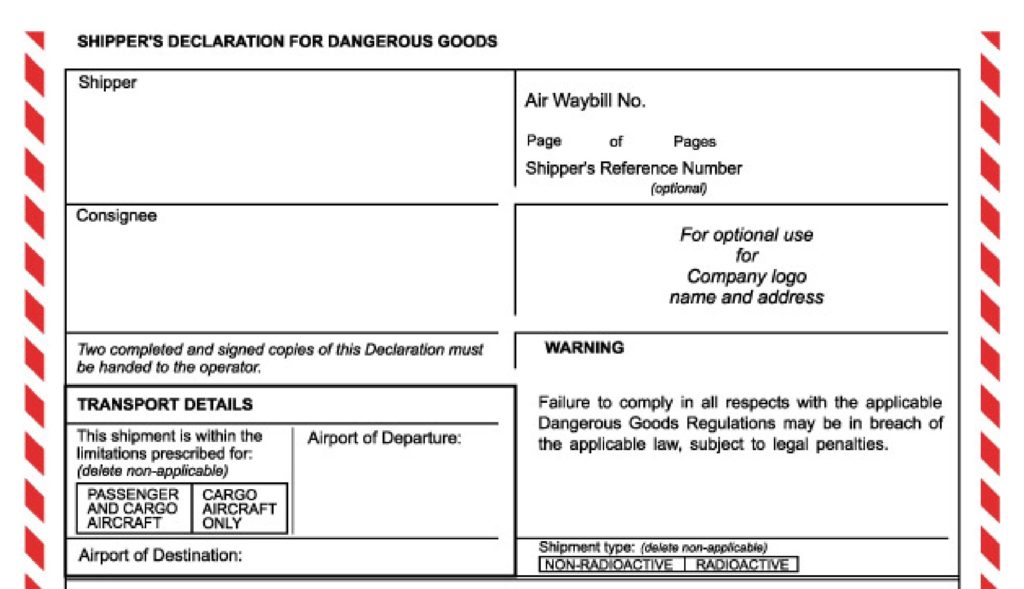
What To Know About Dangerous Goods Packaging
As mentioned previously, proper dangerous goods packaging is of great concern for safely shipping hazardous material. Making certain that the dangerous goods’ packaging is well assembled and sturdy enough to be handled is a priority. But when packaging hazmat for shipping, shippers must meet other guidelines regarding their classes and the degree of danger per substance. This is why dangerous goods shipments have been further broken down into Packing Groups.
The packing groups make the identification of types of classes easily identifiable for shipping and handling purposes. Packing Group I is for substances presenting high danger, Packing Group II is for medium danger, and Packing Group III is for substances of low danger. (Sec 5) The shippers must make certain that all paperwork is filled out completely and correctly, that the information is legible, properly signed, and that the shipment has been prepared according to IATA’s rules and regulations.
In addition to being properly labeled the manufacturers and distributors of the dangerous goods’ packaging must provide necessary information for how the packaging should be assembled and used.
How do you mark and label dangerous goods
Every package containing dangerous good must be appropriately labeled for shipment. This includes labels for their classification, handling, and any other required information. The labels should be affixed in plain sight with no other labeling present that does not apply.
The labels should be durable, printed on adhesive, adhered to the outside of the packaging, and clearly visible. They should meet all specifications, such as shape, color, format, symbol, and text. Every label must include an English version in addition to the language of origin.
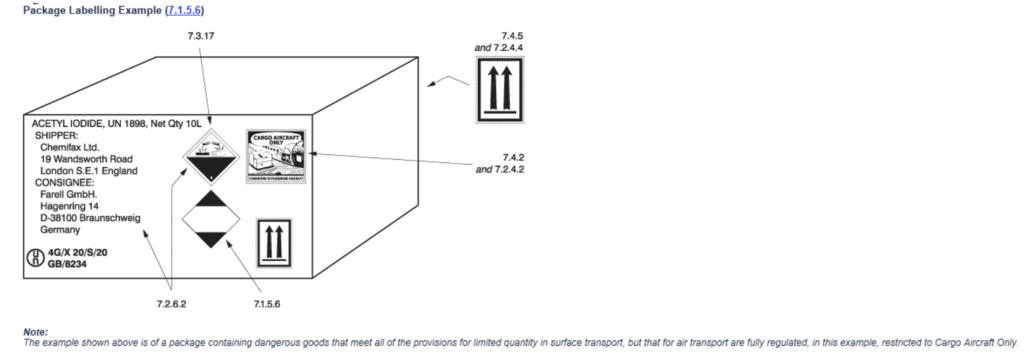
Where To Get Dangerous Goods Labels
To make sure that your dangerous goods labels meet every criteria mentioned in IATA’s Dangerous Goods Regulations (DGR), you can purchase them directly from IATA. You will always be certain to comply with the regulatory requirements when your dangerous goods labels are purchased from the IATA site.
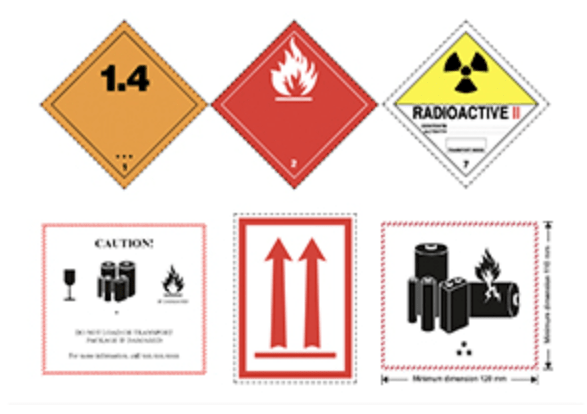
Who Is Responsible For The Dangerous Goods Documentation – The shipper is responsible for completion of the Shipper’s Declaration for Dangerous Goods that describes the dangerous goods being offered for air transport. Great care should be taken as the dangerous goods documentation must be filled out precisely. If the documents are not filled out correctly, the goods cannot be accepted for shipment by air.
Where to find more information
IATA works diligently to ensure air transport remains safe whether through passenger travel or when transporting dangerous goods by air. Safety is the number one concern. IATA recognizes the importance of adequately training stakeholders and giving them the support they need to perform their jobs in a safe and secure manner. IATA is dedicated to providing quality training and regulation manuals to ensure that safety regulations are always easily accessible to those who need them. To find the latest copy of IATA’s Dangerous Goods Regulations (DGR), visit the DGR page.
What is the latest edition of the IATA dangerous goods regulations manual.
The latest edition of IATA’s Dangerous Goods Regulations (DGR) is the 64th edition which is effective from January 1, 2023 to December 31, 2023. It contains all changes made by IATA Dangerous Goods Board and includes an appendix for the confirmed upcoming ICAO’s Technical Instructions changes. There are significant changes in this year’s manual, so all necessary stakeholders must obtain a copy to comply with the new regulations.

